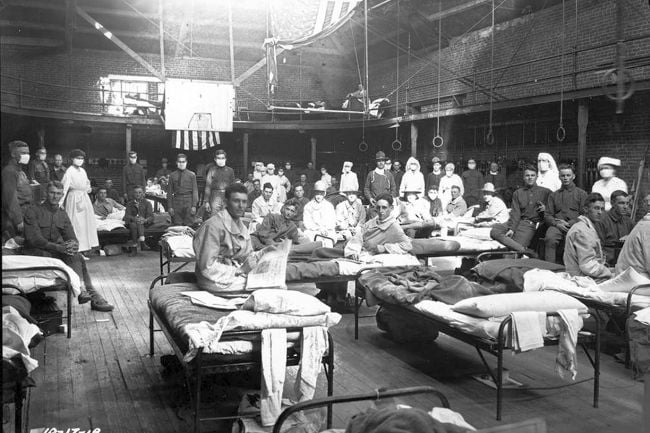The flu pandemic of 1918 killed over 20 million people

The Flu Pandemic of 1918: A Devastating Global Tragedy

The flu pandemic of 1918, also widely known as the Spanish Flu, was one of the deadliest viral outbreaks in history. It caused unprecedented devastation on a global scale, claiming the lives of over 20 million people. This catastrophic event left an indelible mark on history, significantly affecting societies, healthcare systems, and even economies worldwide.
Origins and Spread
Emerging during the closing stages of World War I, the flu pandemic quickly spread across the globe due to increased international travel caused by the war. Contrary to its name, the outbreak did not originate in Spain. It earned the moniker “Spanish Flu” because Spain, not being involved in the war, had no restrictions on reporting the illness. This resulted in Spain being one of the first countries to openly acknowledge and report the flu cases.
Unprecedented Fatality Rate
The 1918 flu was particularly devastating due to its unusually high fatality rate, affecting young, healthy individuals more severely than any other age group. Typically, the flu primarily affects vulnerable populations such as the elderly or those with compromised immune systems. However, during this pandemic, young adults, usually with robust immune systems, were the ones most at risk.
Overwhelmed Healthcare Systems

The impact of the flu pandemic on healthcare systems was catastrophic. Hospitals and medical facilities were inundated with patients, far surpassing their capacity. Medical professionals struggled to provide adequate care, leading to a significant increase in mortality rates. The lack of effective treatments and vaccines at the time only exacerbated the challenges faced by healthcare workers.
Socioeconomic Disruption
The flu pandemic of 1918 also had profound socio-economic consequences. The loss of millions of lives caused a severe disruption in various aspects of society, including the economy, education, and family structures. Businesses and industries suffered as workplaces became hotspots for the transmission of the virus and had to shut down temporarily. Schools and universities closed, disrupting education and social interaction.
Global Response and Legacy
Governments and health organizations worldwide mobilized to combat the flu pandemic. Public health campaigns were initiated to educate the public about prevention measures such as hand hygiene, wearing masks, and avoiding crowded places. Despite the lack of modern medical technology and resources, communities banded together to support one another during these challenging times.
The flu pandemic of 1918, with its devastating death toll and far-reaching impact, left a lasting legacy on global health practices. It highlighted the need for enhanced healthcare infrastructure, international cooperation, and ongoing research to prevent future outbreaks. Today, the lessons learned from this tragic event continue to shape how we respond to global health crises, underscoring the importance of preparedness, early detection, and effective public health interventions.
Sources:
Related Posts
Quick Links
Legal Stuff

